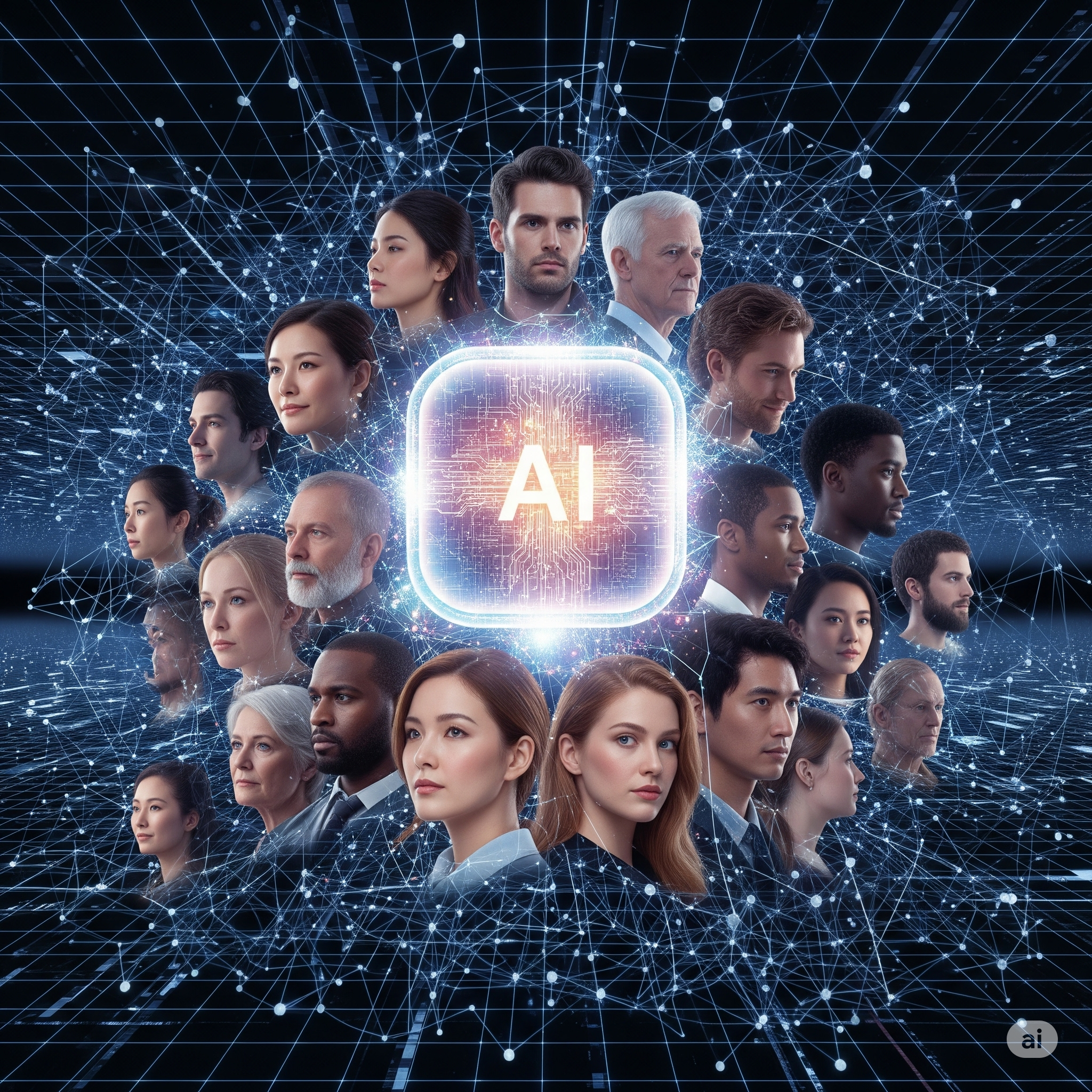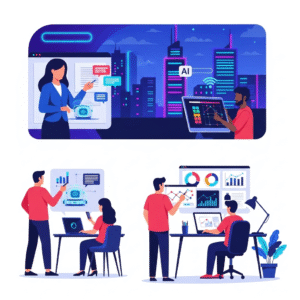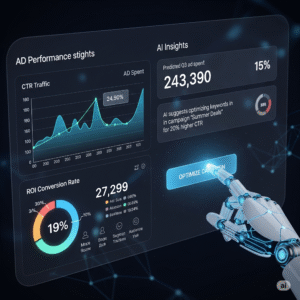KnowKnowing your customers is a fundamental business rule, but how well do you truly know them? For many years, marketers relied on traditional segmentation. This meant dividing customers by age, location, and gender. This method offers a basic idea of your audience, but it misses all the nuanced details. So, AI in Customer Segmentation steps in. It transforms a static, one-dimensional view into a dynamic, predictive, and deeply personal understanding of your audience.
In 2025, a successful business doesn’t just sell to a market; it serves individual people. This shift is driven by artificial intelligence for customer segmentation strategies. This technology moves past simple demographics to uncover hidden behaviors, motivations, and preferences. Instead of broad groups, you get micro-segments. These allow for hyper-personalized messaging and experiences. This article will show you how AI in Customer Segmentation is redefining marketing. It includes real-world success stories, essential tools, and a guide to getting started.
From Static to Dynamic: The Evolution of Customer Segmentation
Traditional customer segmentation uses fixed characteristics. A customer is either “in” a segment or “out.” This approach is simple, but it has a major flaw: people aren’t static. Their behaviors, needs, and interests change over time. For example, a young professional buying their first home has very different needs than that same person five years later with a family. Manual segmentation simply can’t keep up with this kind of evolution.
However, AI in Customer Segmentation is always learning. It uses machine learning models to continuously process real-time data from various sources. This includes website visits, purchase history, social media interactions, and support tickets. Consequently, the segments aren’t fixed; they’re dynamic. An AI can automatically move a customer from a “new buyer” segment to a “loyal advocate” segment as their relationship with your brand evolves. This continuous adaptation is a core part of modern artificial intelligence for customer segmentation strategies because it ensures your marketing is always relevant.
Unlocking Deeper Insights with AI in Customer Segmentation
The real magic of AI in Customer Segmentation lies in its ability to uncover patterns. These patterns are too complex for a human analyst to find. It’s like having a super-powered detective for your data. While a human might spot a correlation between age and product preference, an AI can identify a micro-segment of customers who:
- Are between 25 and 35 years old.
- Live in a specific zip code.
- Frequently browse products on Tuesdays after 9 p.m.
- Have a history of abandoning their carts but purchasing after getting a personalized discount.
This level of detail lets you create a marketing campaign that feels incredibly precise. It’s known as predictive segmentation. Here, AI doesn’t just group customers by past actions. It predicts what they are most likely to do next. That could be making another purchase or churning entirely. Ultimately, this is a game-changer for businesses that want to stay ahead.
Real-World Triumphs: How AI in Customer Segmentation Delivers Results
The impact of AI in Customer Segmentation is not just theoretical. It’s a proven method for driving business growth. These case studies show how smart companies are using AI to gain an advantage.
Case Study 1: An E-commerce Brand’s Hyper-Personalized Promotions
A mid-sized fashion retailer struggled with low conversion rates. They ran generic discount campaigns for their entire email list. This often led to over-discounting their loyal customers while failing to entice new ones. They decided to implement a predictive segmentation tool powered by AI in Customer Segmentation. The AI analyzed past purchases, browsing behavior, and even the products customers viewed but didn’t buy. It then created specific micro-segments, such as “Deal Seekers,” “Premium Purchasers,” and “Style Explorers.”
With these new segments, the retailer could tailor their marketing. “Deal Seekers” received early-bird discounts. “Premium Purchasers” were shown new, high-end arrivals. “Style Explorers” got a curated list of trendy outfits. As a result, the company saw a 25% increase in conversion rates from personalized emails. There was also a 15% lift in average order value (AOV). This proved that a relevant message, delivered to the right person, is far more effective than a generic blast.
Case Study 2: A Subscription Service’s Proactive Churn Prevention
A popular streaming service had a high customer churn rate. They knew who was canceling, but they didn’t know why or, more importantly, when. They turned to an AI-powered analytics tool to identify at-risk customers. The AI system analyzed many behavioral data points. This included a drop in viewing hours, a decrease in engagement with personalized recommendations, and a recent change in billing information.
The AI scored each customer’s likelihood of churning weekly. When a customer’s score rose above a certain threshold, the system automatically triggered a proactive retention campaign. The campaign included personalized emails with exclusive content, surveys for feedback, and a targeted offer for a free month. This strategy, which leveraged AI in Customer Segmentation, led to a 20% reduction in customer churn. It also created a significant increase in customer lifetime value (CLV).
Essential AI Tools for Customer Segmentation Strategies
You don’t need to be a data scientist to use AI in Customer Segmentation. Many user-friendly tools are designed to make it easy for marketers. Here are a few recommendations to help you get started:
- HubSpot: This CRM platform has an AI-powered system that unifies your customer data. This allows you to create highly targeted segments based on behavior, engagement history, and more.
- Twilio Segment: As a customer data platform (CDP), Segment collects all your customer data in one place. It provides AI-driven segmentation tools to help you identify high-value customer groups and trigger personalized marketing campaigns.
- Optimove: Optimove focuses on customer relationship management with AI-powered features. It uses machine learning to create a complete customer profile. It also predicts which segments are most likely to respond to a specific campaign.
- Adobe Experience Cloud: This robust platform includes AI capabilities. They help businesses understand customer behavior and build highly effective segments for personalized marketing and advertising.
Each of these tools can serve as a powerful foundation for your artificial intelligence for customer segmentation strategies.
AI for Graphic Designers? Mistakes Designers Make
Your Roadmap: A Beginner’s Guide to AI in Customer Segmentation
Getting started with AI in Customer Segmentation might seem intimidating, but it doesn’t have to be. Follow these simple steps to build a smart, data-driven strategy.
- Start with the Data: First, ensure your data is clean and organized. An AI is only as good as the data it’s given. Unify all your customer information—from CRM records to website analytics—into one central location. A Customer Data Platform (CDP) or an AI-powered CRM is excellent for this.
- Define Your Goal: What do you want to achieve? Better customer retention? Increased cross-sells? Higher engagement? Setting a clear goal helps your AI focus on the most important metrics. It also provides a benchmark for success.
- Embrace Predictive Analytics: Don’t just look at past data. Use AI to predict future behavior. Start by identifying a group of customers who have recently become “inactive.” Then, use your AI tool to analyze their shared characteristics. This helps you identify other similar customers who might be on the verge of churning.
- Test and Learn: Roll out a segmented campaign to a small group. Compare the results against a control group that received a generic message. The data you gather from these small experiments will help you refine your AI in Customer Segmentation approach. It also helps you prove its value to your team.
The Human Future: Marketers as Strategists
With AI handling the complex data analysis, the marketer’s role is elevated. Instead of spending hours pulling reports, you become a high-level strategist. A McKinsey report on personalized marketing highlights this perfectly. AI and generative AI allow marketers to create and scale relevant messages with bespoke tone and imagery at high volume and speed.
Is AI in Marketing Worth the Investment?
The most successful marketers of tomorrow will be the ones who ask the right questions of their data. They will interpret the AI’s findings. They will craft the compelling stories that resonate with each unique customer segment. The future is a partnership between human creativity and machine intelligence. It’s an incredibly exciting time to be in marketing.
Keyword List: AI in Customer Segmentation, Artificial Intelligence for Customer Segmentation strategies, AI for customer segmentation, predictive customer segmentation, dynamic customer segmentation, machine learning for customer segmentation, AI tools for customer segmentation, behavioral segmentation with AI, personalized marketing with AI



